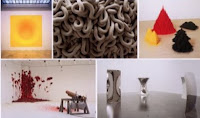And that pace is getting faster every year. Although out in the sticks here (where telephonic reception is pants) we are now on broadband and able to join the internet highway. Even if we can’t break the speed limit. If there is no reception for even ten minutes I get tetchy and panic. How will I be able to send photographs, transfer any copy, advise contacts of events, check my accounts, order my mother’s shopping and.....publish my blog!
‘Doing research’,well, with the internet it’s taken on a whole new meaning: plodding off to the library, rooting out museums, dredging up texts from all sorts of strange places? Dead. I used to argue that when digging about in books and journals, indexes and archives I would often come across stuff I would never have thought of looking for. The old argument that perhaps one doesn’t always know what one is looking for.
Forget it. Go onto the World Wide Web and you’ll get information up to your ears. Search engines will magic some web page or other and that will lead you onto something else. Although what is still needed is that gut instinct, inspiration and application. It remains basic detective work. But there’s no footwork, no travel costs, no having to fit your research into open days or opening hours: it can be done at 2am. Tonight, any night, every night if you want.
 And as for snail mail: dead as a squashed gastropod. Gone are the days when ‘It’s in the post’ gave us a little time to get the task done. Here is rural Kent we were snowed in just before Christmas but was that an excuse to get out of the saddle - no way. Sorry, no post. 'Just email it,’ is the riposte.
And as for snail mail: dead as a squashed gastropod. Gone are the days when ‘It’s in the post’ gave us a little time to get the task done. Here is rural Kent we were snowed in just before Christmas but was that an excuse to get out of the saddle - no way. Sorry, no post. 'Just email it,’ is the riposte. If you’re sent an email this morning the least that person expects is a reply this afternoon. And worse. If it arrives in your inbox during the evening or over the week-end you can forget any lame excuse about out-of-work-hours. That’s a phrase as old hat as top hat. You better reply asap or you’ll get another one.
And it doesn’t stop there. It follows us about. My laptop is portable (well, it is if you call lugging the equivalent of a big bag or two of potatoes around with you) taken on every trip away from the home hub. And if there’s no wireless connection when I’m on the hoof, oh horror, what will I do. How will I cope without electronic communication. (Amazing how I survived before The Net concurrently holding down two jobs, bringing up a family and keeping house.)
Now my biceps have been given respite. I have a new phone – well mini computer really – that I had to work very hard convincing Best Beloved was absolutely essential to maintaining my lifestyle. Obviously I have to be able to telephone mates at all times and I have to be able to track down BB when he goes walkabout (which he does whenever we’re meant to be shopping or sightseeing). But I also need to make bookings, search the web, advise when a meeting is running late, pick up business emails, text the kids, etc etc etc.
Yet I’ve chosen these deliverers of the digital age: those gainfully employed expect them. Not only do they expect the latest gismos but their employers expect them to be plugged in to the things twenty four seven. (It may be that this turns out in time to be a poisoned chalice - I reckon it’s not long before employees start to sue employers for overloading their personal wiring)
What it means is that - for all of us - the passage of time has become something that can be manipulated but not slowed. And what this boils down to is that the pace of life is pacier yet: not allowed to do nothing, no time for vacuous thoughts or voluminous ideas. No time to stand and stare. For a happy new year perhaps we should simply SWITCH OFF.
Lucy
lucyannwrites.blogspot.com











































